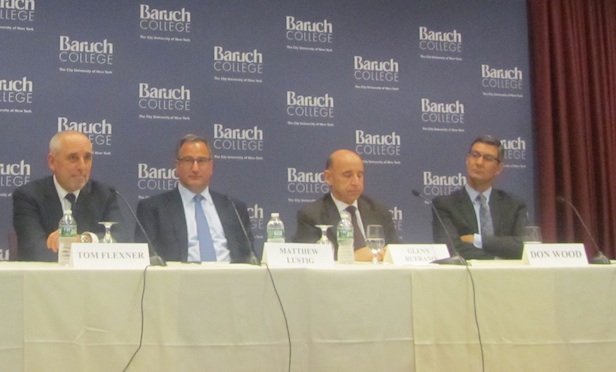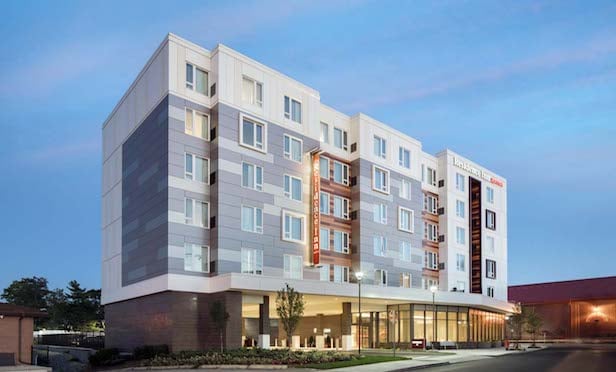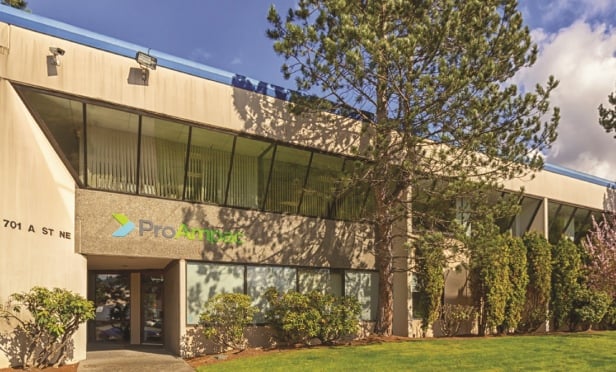
NEW YORK CITY—“The world is changing in a big way,” said Donald Wood, president and CEO, Federal Realty Investment Trust.
In a discussion held here late last week at Baruch College's Steven L. Newman Real Estate Institute on the state of the industry—aptly titled “Real Estate Headwinds, Tailwinds & Trade Winds: Which Way is the Wind Blowing?”—a panel of commercial real estate executives opined on recent trends and what's ahead.
And while the generation known as millennials that so many industry discussions go to wasn't specifically mentioned, concerns about all of the changes that group has brought about were raised. Those included a change in the types of popular property types, the seismic shift in retail to the “omni-channel approach” as well as worldwide economic shifts that stand to impact all of commercial real estate.
“We probably have more of a risk of obsolescence today than in most of our careers,” declared Matthew Lustig, managing partner of North America investment banking and head of real estate, Lazard. “Certainly in office and retail below A quality malls, the location on main and main and classic building structures that have worked over time will be tested more severely than in the past. And one thing that'll be a bit of a headwind will be the capital coming into the business.”
Concurred Wood, “We're over retailed and over officed and a lot of the product is obsolete. Meanwhile, interest rates are low and cap rates are even lower, so much of this real estate will be worth less in five to 10 years, not more.”
Retail real estate, in particular, remains an open question for players in the space. “There's no doubt that consumer habits and what's happening with retailers and other business is less predictable today than it's been in a long time,” asserted Glenn Rufrano, CEO, VEREIT. “So everyone is struggling with indecisiveness regarding what to do next because of uncertainty. That's when things clamp up and I'm feeling that. It makes 2016 and 2017 a whole lot less certain than 2014 and 2015.”
Others mentioned a whole set of other issues coming down the pike. “A headwind will be higher commercial mortgage rates because of CMBS,” noted Thomas Flexner, global head of real estate, Citigroup. “There's another $60 billion maturing this year that has to be dealt with and another $210 billion to $215 billion coming due next year. That leaves a huge void. The life companies' allocations at the beginning of the year were $60 billion but they've already eaten through $40 billion so they're not going to be much help for the rest of the year.
“Also, there are multiple headwinds in terms of the cost of capital when doing CMBS transactions and banks,” he continued. “This summer there will be three deals structured with risk retention as a test case. Our best calculation is that will add 15 to 20 basis points.”
Yet some industry professionals remain somewhat optimistic. “If I were to look at the past, such as 1981, the circumstances today are different,” said Rufrano. “At that time, the prime rate was 20% and inflation was about 10% and there was a lot of chaos.
Today, we have flat-ish economic growth, relatively low interest rates and basic fundamentals that are understandable. I don't think there are as many tailwinds.”
GDP is around 2%, the panel concluded, and “it feels to me like maybe we have to live with that,” continued Rufrano. “We all got walloped early this year but real estate recovered. If we stay with a predictable interest rate, I'd feel reasonable about real estate investment.”

In a discussion held here late last week at Baruch College's Steven L. Newman Real Estate Institute on the state of the industry—aptly titled “Real Estate Headwinds, Tailwinds & Trade Winds: Which Way is the Wind Blowing?”—a panel of commercial real estate executives opined on recent trends and what's ahead.
And while the generation known as millennials that so many industry discussions go to wasn't specifically mentioned, concerns about all of the changes that group has brought about were raised. Those included a change in the types of popular property types, the seismic shift in retail to the “omni-channel approach” as well as worldwide economic shifts that stand to impact all of commercial real estate.
“We probably have more of a risk of obsolescence today than in most of our careers,” declared Matthew Lustig, managing partner of North America investment banking and head of real estate, Lazard. “Certainly in office and retail below A quality malls, the location on main and main and classic building structures that have worked over time will be tested more severely than in the past. And one thing that'll be a bit of a headwind will be the capital coming into the business.”
Concurred Wood, “We're over retailed and over officed and a lot of the product is obsolete. Meanwhile, interest rates are low and cap rates are even lower, so much of this real estate will be worth less in five to 10 years, not more.”
Retail real estate, in particular, remains an open question for players in the space. “There's no doubt that consumer habits and what's happening with retailers and other business is less predictable today than it's been in a long time,” asserted Glenn Rufrano, CEO, VEREIT. “So everyone is struggling with indecisiveness regarding what to do next because of uncertainty. That's when things clamp up and I'm feeling that. It makes 2016 and 2017 a whole lot less certain than 2014 and 2015.”
Others mentioned a whole set of other issues coming down the pike. “A headwind will be higher commercial mortgage rates because of CMBS,” noted Thomas Flexner, global head of real estate,
“Also, there are multiple headwinds in terms of the cost of capital when doing CMBS transactions and banks,” he continued. “This summer there will be three deals structured with risk retention as a test case. Our best calculation is that will add 15 to 20 basis points.”
Yet some industry professionals remain somewhat optimistic. “If I were to look at the past, such as 1981, the circumstances today are different,” said Rufrano. “At that time, the prime rate was 20% and inflation was about 10% and there was a lot of chaos.
Today, we have flat-ish economic growth, relatively low interest rates and basic fundamentals that are understandable. I don't think there are as many tailwinds.”
GDP is around 2%, the panel concluded, and “it feels to me like maybe we have to live with that,” continued Rufrano. “We all got walloped early this year but real estate recovered. If we stay with a predictable interest rate, I'd feel reasonable about real estate investment.”
© 2025 ALM Global, LLC, All Rights Reserved. Request academic re-use from www.copyright.com. All other uses, submit a request to [email protected]. For more information visit Asset & Logo Licensing.









